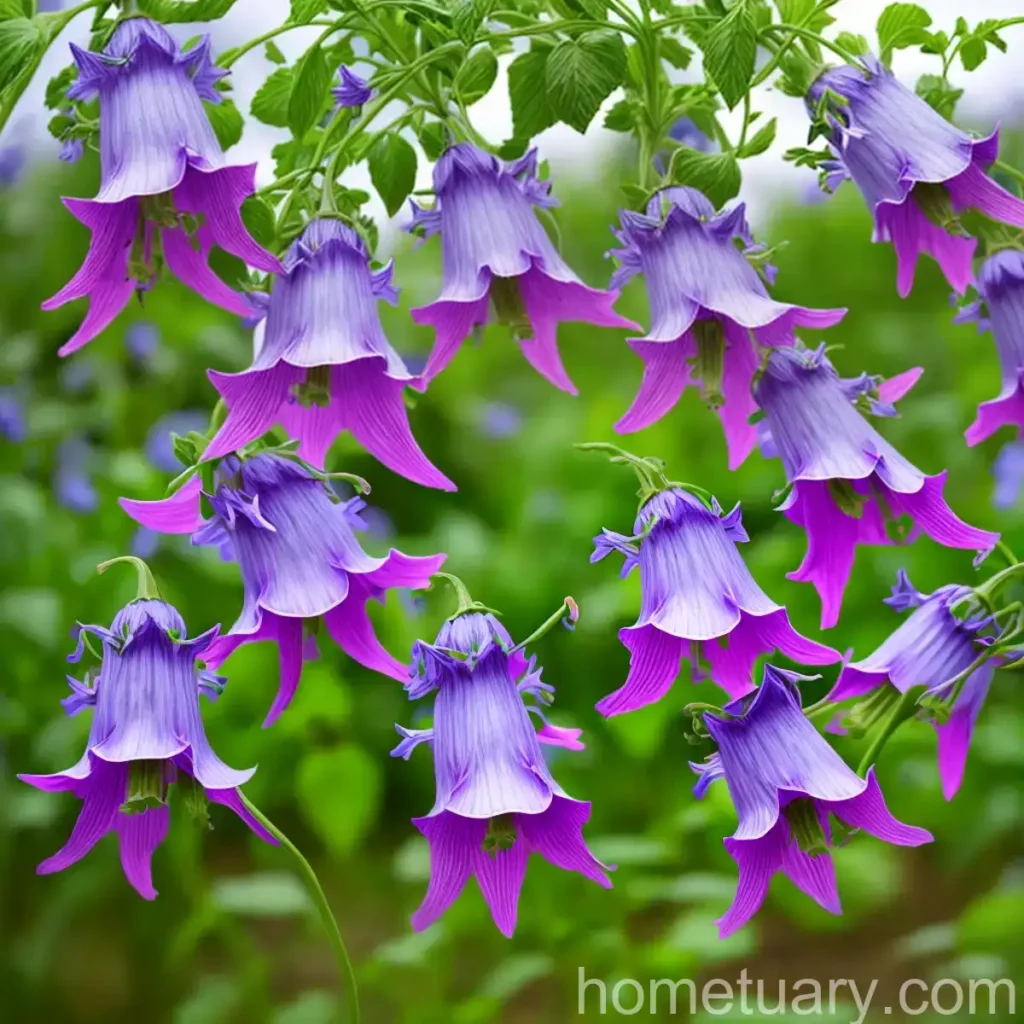Bellflower (Campanula bononiensis)
Welcome to this comprehensive guide to the beautiful bellflower, scientifically known as Campanula bononiensis. In this blog post, we will delve deep into the world of bellflowers, exploring their culture, uses, cultivation, maintenance, and so much more. Whether you are a seasoned gardener or a beginner looking to add a touch of elegance to your garden, this guide is tailored for you. So, let’s get started!
What is Plant Bellflower (Campanula bononiensis)?
Bellflower (Campanula bononiensis) is a species of flowering plant in the family Campanulaceae, native to the Apennine Mountains in Italy. It is known for its graceful, bell-shaped flowers that bloom in shades of pale lavender, creating a stunning display in gardens and landscapes. This herbaceous perennial is cherished for its ornamental value and is a favorite among gardeners for its low maintenance and charming aesthetic appeal.
Key Takeaways
Here are the key takeaways you can expect from this comprehensive guide:
– Bellflower (Campanula bononiensis) culture, uses, and characteristics
– Tips for watering, sunlight, fertilizer, soil, and pruning
– Methods for propagation and container gardening
– Common diseases and pests, along with their prevention and control
– Fun facts, folklore, and cultural significance
– Links to external resources for further exploration
Now, let’s explore each of these aspects in detail to gain a holistic understanding of Campanula bononiensis.
Bellflower (Campanula bononiensis) Culture
Cultivating bellflowers involves understanding their environmental preferences, natural habitat, and growth patterns. By providing the right conditions, you can ensure optimal growth and prolific blooming in your garden. Let’s delve into the cultural aspects of this enchanting plant.
Uses
Bellflowers are primarily grown for ornamental purposes, lending beauty to gardens, borders, and rockeries. The delicate, nodding bells of Campanula bononiensis attract pollinators such as bees and butterflies, adding life and movement to the landscape. Additionally, these blooms are often used in cut flower arrangements to bring their charm indoors.
Water
Bellflowers thrive in well-draining soil and prefer moderate moisture. When establishing young plants, ensure consistent watering to support root development. Once established, they exhibit some drought tolerance, making them suitable for gardens with varying moisture levels. It’s important to strike a balance, avoiding both waterlogging and prolonged dryness.
Sunlight
Campanula bononiensis flourishes in full sun to partial shade. When planted in sun-drenched locations, they tend to produce more prolific blooms, although they can tolerate shadier spots with slightly reduced flowering. For ideal results, aim to provide at least 6 hours of direct sunlight each day.
Fertilizer
To support healthy growth and abundant flowering, consider adding a balanced, slow-release fertilizer in early spring as new growth emerges. A general-purpose fertilizer with equal N-P-K (nitrogen, phosphorus, potassium) ratios can provide the necessary nutrients without overstimulating foliage at the expense of flowers.
Soil
Bellflowers prefer well-draining, fertile soil with a slightly acidic to neutral pH range. Amending the soil with organic matter such as compost or well-rotted manure can improve its structure and nutrient content. It’s essential to avoid waterlogged conditions, which can lead to root rot and other problems.
Pruning
Pruning bellflowers involves deadheading spent blooms to encourage continued flowering and maintain a tidy appearance. Additionally, removing any damaged or diseased foliage can promote overall plant health and vigor. Pruning is typically performed after the initial bloom to prompt a second flush of flowers and tidy up the plant.
Propagation
Campanula bononiensis can be propagated through division or seeds. Division is best carried out in early spring or early autumn, while seed sowing can be done in late spring. The process of propagation enables gardeners to expand their bellflower collection and rejuvenate aging plants for renewed vitality.
Container Popularity
With their compact growth habit and charming blooms, bellflowers are well-suited for container gardening. Whether you have limited space, wish to add a pop of color to your patio, or want to create stunning floral displays, bellflower varieties can thrive in containers with the right care and conditions.
Container
When selecting a container for bellflowers, opt for a spacious pot with adequate drainage holes to prevent waterlogging. This allows excess moisture to escape, safeguarding the roots from potential rot. Selecting containers with a diameter of at least 12 inches provides ample room for root development and stability.
Common Diseases
While bellflowers are relatively resilient, they can be susceptible to certain diseases that may impact their growth and appearance. Understanding these potential issues and appropriate measures can help maintain the health and vitality of your bellflower plants.
Disease Diagnosis
Some common diseases that affect bellflowers include powdery mildew, root rot, and rust. Powdery mildew presents as a white, powdery coating on the foliage, while root rot causes wilting and discoloration of the lower plant parts. Rust manifests as orange or brown spots on the leaves, often leading to defoliation.
Common Pests
Like many garden plants, bellflowers may encounter pest issues that require intervention to prevent damage and ensure their well-being. By recognizing and addressing potential pest threats, you can safeguard your bellflowers from infestations and minimize any associated damage.
Botanist’s Tips
For gardeners seeking expert insights, here are some botanist’s tips to help guide successful cultivation and care of bellflowers:
– When dividing bellflowers, ensure each division has a good balance of roots and shoots for robust establishment.
– Keep an eye on rainfall and irrigation to prevent water-related issues such as root rot and fungal diseases, particularly during prolonged wet periods.
Fun Facts
Delving into the intriguing world of bellflowers reveals a range of fascinating facts that add depth to our appreciation of these enchanting plants. From folklore to natural history, these fun facts shed light on the allure and cultural significance of bellflowers.
Links to External Resources
For further exploration and in-depth information on bellflowers, here are some valuable external resources to enhance your knowledge and enjoyment of these remarkable plants:
– Royal Horticultural Society (RHS) – Campanula bononiensis
– Missouri Botanical Garden – Campanula bononiensis
– University of Georgia Extension – Bellflower Cultivation Guide















